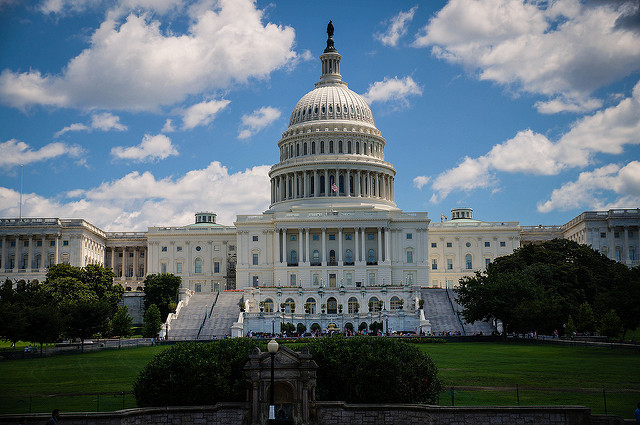
155 Republican members of Congress are calling for protecting the successful structure of the Medicare Part D program in a letter to Congressional leadership.
These lawmakers, led by Congressman Richard Hudson (R-N.C.), highlighted two urgent issues that must be addressed. First, they urged Congress to fix the market distorting incentives that were inadvertently created when the “donut hole” coverage gap was closed early this year. Second, these lawmakers warned against allowing the Part D catastrophic coverage cliff to take effect, which would slug many seniors with cost increases as high as $1,500 per year.
Enacted into law 15 years ago, the Medicare Part D prescription drug program has been a successful model of healthcare by levering free market competition to deliver cost effective outcomes for patients and taxpayers.
Part D’s free market competition relies on incentives that empower consumers to make choices that best fit their needs and a structure that promotes competition between pharmacy benefit managers (PBMs), pharmaceutical manufacturers, pharmacies, and plans.
As a result, the program is extremely popular and has saved billions of dollars. Part D’s costs are under budget by 45 percent compared to estimates at the time the program was enacted, while 9 in 10 seniors are satisfied with the Part D drug coverage.
However, the success of this program will be significantly undermined if Congress fails to address two pressing issues.
The Part D Catastrophic Cliff Must Be Addressed in A Responsible Way
When Part D was first enacted, the catastrophic threshold grew at the rate of beneficiary per capita spending, which is the same rate as Part D’s other coverage phases.
However, this growth rate was artificially altered when Congress passed Obamacare.
Obamacare temporarily slowed the growth rate between 2014 and 2019, only to increase the threshold to pre-Obamacare levels in 2020. This has the effect of increasing the catastrophic threshold by $1,500 in a single year, which will lead to significantly higher out-of-pocket costs for seniors.
Instead of allowing this threshold to increase, lawmakers should protect seniors by setting the growth rate on a sustainable path that phases in the Part D cliff over several years. Such an approach will grant certainty to seniors who will be better able to plan ahead for higher costs over the long-term.
In addition to protecting seniors from higher prices, this reform will also promote honest budgeting. Because both parties fear they would be punished at the ballot box, it is unlikely that the $1,500 coverage cliff will ever be allowed to take effect. This means that Congress could soon create a budget gimmick similar to Medicare’s Sustainable Growth Rate, which was extended regularly for more than a decade.
Address the Market Distorting Price Controls in the Part D Donut Hole Coverage Gap
The donut hole is a coverage gap in Medicare Part D between the initial coverage limit and the catastrophic threshold. Within the donut hole, consumers have been forced to pay out-of-pocket costs far exceeding other coverage thresholds. In 2018, this coverage gap was between $3,750 and $5,000 in out-of-pocket costs.
When Obamacare was passed, the law implemented a gradual closing of the donut hole, culminating in a 2020 fix that instituted a 50 percent price control on medicines in the form of a mandated discount on medicines sold within this coverage threshold (consumers would pay 25 percent of the cost and plans would cover the other 25 percent).
Earlier this year, Congress took action to close the donut hole one year early. Unfortunately, they did so in a deeply flawed way – by expanding the price control on medicines in this threshold so that manufacturers would be forced to shoulder 70 percent of all costs. Perversely, the 20 percent price control increase does not benefit seniors, but rather benefits insurers managing Part D plans.
This policy change has resulted in an 80 percent decrease that plans were required to spend on medicines in the donut hole threshold and a 40 percent increase in the amount that manufacturers were forced to discount their products.
Part D plans offer competitive prices and access to medicines based on the incentives inherent in the pricing structure. Modifying the structure of Part D threatens to erode the incentives that drive choice, cost, and access.
In fact, according to the American Action Forum, the changes to the donut hole reduce insurer liability by $3 billion in which will significantly reduce any incentive to keep prices low.
Congress can rectify this market distortion by reducing the price control on medicines in the donut hole.

